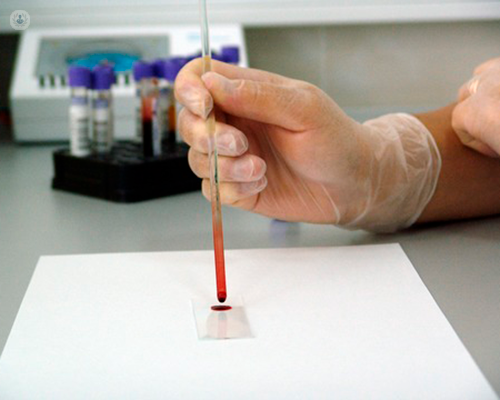

What is myelofibrosis?
Myelofibrosis is a bone marrow disorder that causes an abnormal production of blood cells, resulting in bone marrow scarring and severe anaemia. This is a type of myeloproliferative disorder.
This condition alters the process of creation and maturation of blood stem cells in the bone marrow. In people with myelofibrosis, the red blood cells count (as well as white blood cells and platelets) is lower compared to that of a healthy individual.
There are two types of myelofibrosis:
- Primary myelofibrosis: caused by a genetic mutation;
- Secondary myelofibrosis: this can occur as a consequence of other conditions, such as metastatic cancer, Hodgkin’s disease or polycythemia vera.
The disease leads to the scarred bone marrow, impairing its capacity of generating blood cells.

Prognosis:
Most people with myelofibrosis get worse over time, sometimes developing a more serious form of leukaemia. However, some people live for years with Myelofibrosis, but experience no symptoms. Treatments aim to provide symptom-relief.
What are the symptoms of myelofibrosis?
The symptoms of myelofibrosis arise slowly and are almost imperceptible to start with. The most common symptoms are:
- Anaemia;
- White blood cell deficiency;
- Thrombocytosis (platelets deficiency);
- Enlarged spleen;
- Enlarged liver;
- Paleness;
- Bruising;
- Easy bleeding;
- Night sweats;
- High temperature;
- Prone to infection.
How is myelofibrosis diagnosed?
A diagnosis can be formulated with:
- Physical examination: you will tell your doctor about your symptoms. The doctor will check your blood pressure and the size of your spleen and liver, as well as of the abdominal area and lymph nodes;
- Blood test: to check blood cell levels;
- Bone marrow biopsy: it is done to get a clear result, in case the previous tests weren’t conclusive. The bone marrow sample is taking from the hips;
- Genetic tests: these are helpful if there is a suspect that the myelofibrosis may be inherited and caused by a genetic mutation;
- X-ray scan: this can determine the stage the disease has reached.
What causes myelofibrosis?
Although it is not fully known what causes myelofibrosis yet, it has been observed that a mutation of the JAK2 gene could be a potential root cause, as 50% of the individuals affected by myelofibrosis have this genetic mutation. However, it is not known why this genetic mutation occurs within the blood stem cells.
How can it be prevented?
This condition cannot be prevented, and there are certain risk factors that increase your risk:
- Age: this condition can affect anyone, but most people diagnosed are over the age of 50.
- Exposure to radiation or chemicals: exposure to high levels of radiation and the chemical benzene have been linked to cases of myelofibrosis.
- You suffer from another blood cell disorder: secondary myelofibrosis can develop as a result of other conditions, such as polycythemia vera.
How is myelofibrosis treated?
Treatment for myelofibrosis largely depends on the stage the condition has reached.
- Asymptomatic or early stage: there is no need for treatment, but you will need to be periodically monitored by a specialist;
- Anaemia: it can be treated with periodic blood transfusions or by taking androgenic hormones, erythropoietin, or other medications stimulating the production of red blood cells;
- An enlarged spleen: this can be treated with chemotherapy or in more severe circumstances, the spleen will have to be surgically removed.
- Targeted JAK2 drug therapy: this treatment aims at inhibiting the action of the JAK2 gene by taking specific medication.
- Bone marrow transplant: as it is very invasive, a bone marrow transplant is done only when other treatments have failed; it consists of implanting stem cells from a compatible and healthy donor’s bone marrow.
Which doctor should I talk to?
You should see a specialised haematologist.
